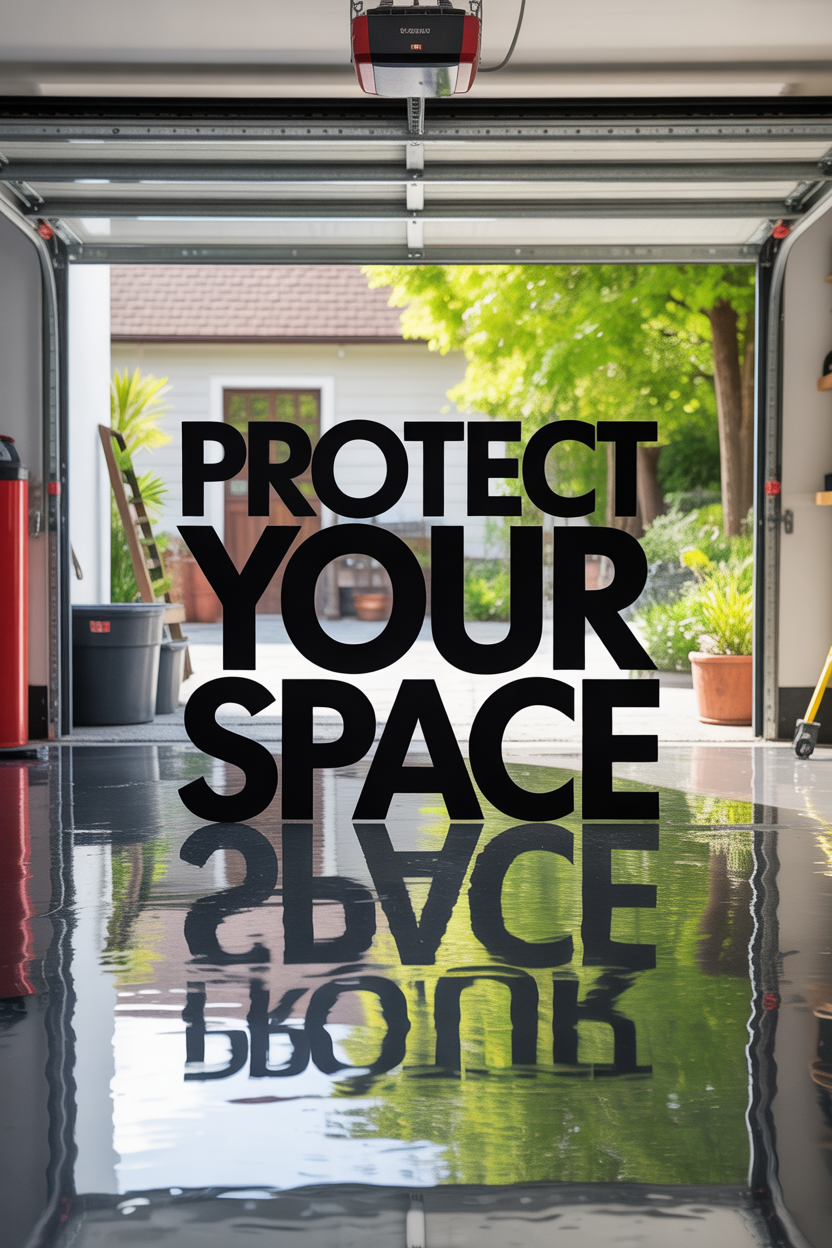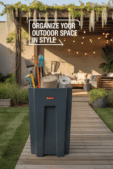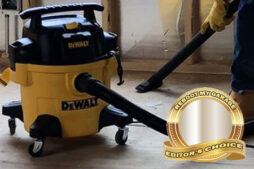Can You Really Make a Garage Floor Waterproof?

Let’s talk about your garage floor. You see the concrete, the occasional puddle from a wet car, and you start to wonder, “Can I make this thing waterproof?”
We’re talking submarine-level waterproof. It’s a fantastic question, and the honest-to-goodness answer is… kind of.
The short answer is no, you can’t make a standard residential garage floor 100% waterproof. But you can get incredibly close with the right products.
The heavyweight champion for a new build is a vapor barrier membrane under the concrete slab combined with a high-performance coating like epoxy on top.
In this guide, we’ll break down what it really means to protect your garage floor from moisture. The good news is, you probably don’t need to build a concrete version of a rain jacket to solve your problems.
Even the simplest options can make a world of difference in preventing dampness, protecting your concrete, and making the space more usable.
Under-Slab Membranes: The “Before” Solution
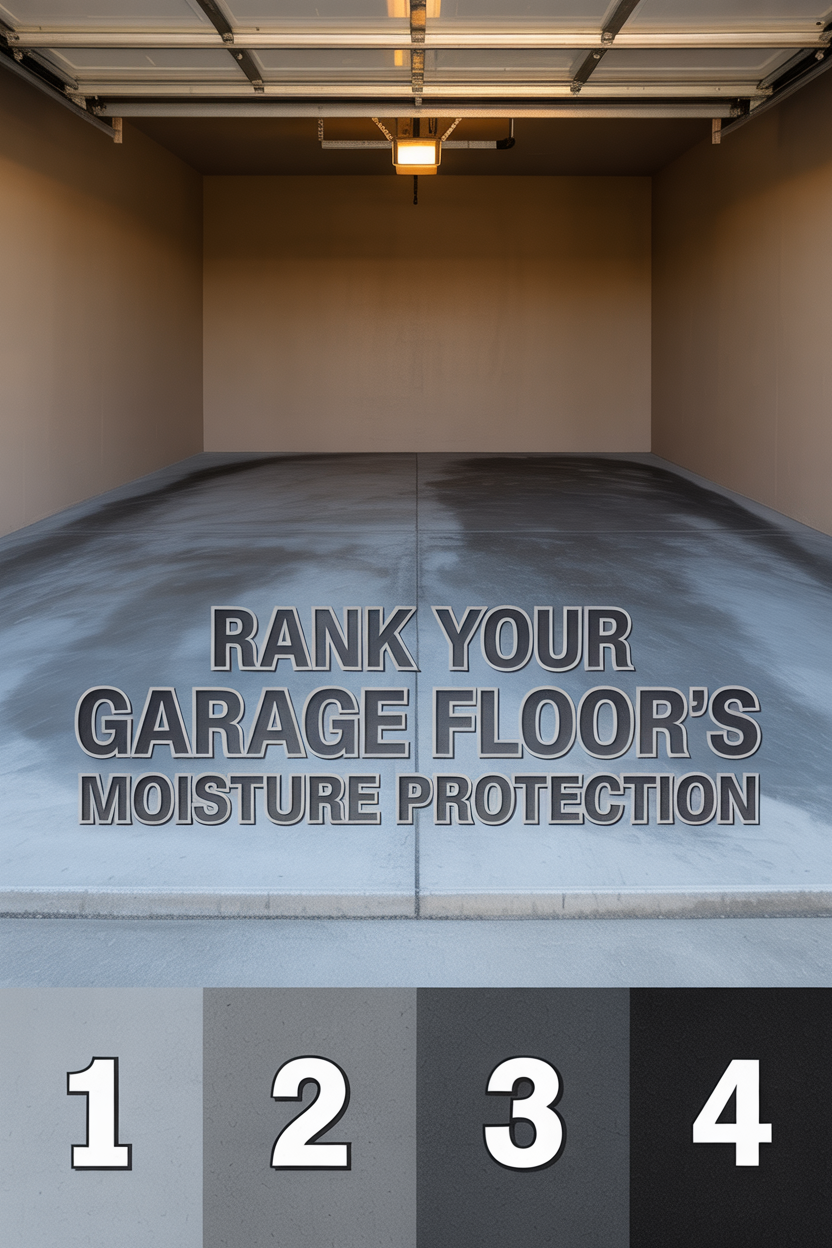
The first type of barrier is the plastic sheet we mentioned earlier. It’s put down on the graded earth before a single drop of concrete is poured.
This is the most effective way to stop groundwater from slowly seeping up into your floor as vapor.
Think of it like putting on your underwear. You have to do it before you put on your pants, which, in this case, is the concrete.
What’s the catch? If your garage is already built, this ship has sailed. You can’t just slide a giant plastic sheet under your existing garage floor. Fun to imagine, though.
Topical Coatings & Sealants: The “After” Solution
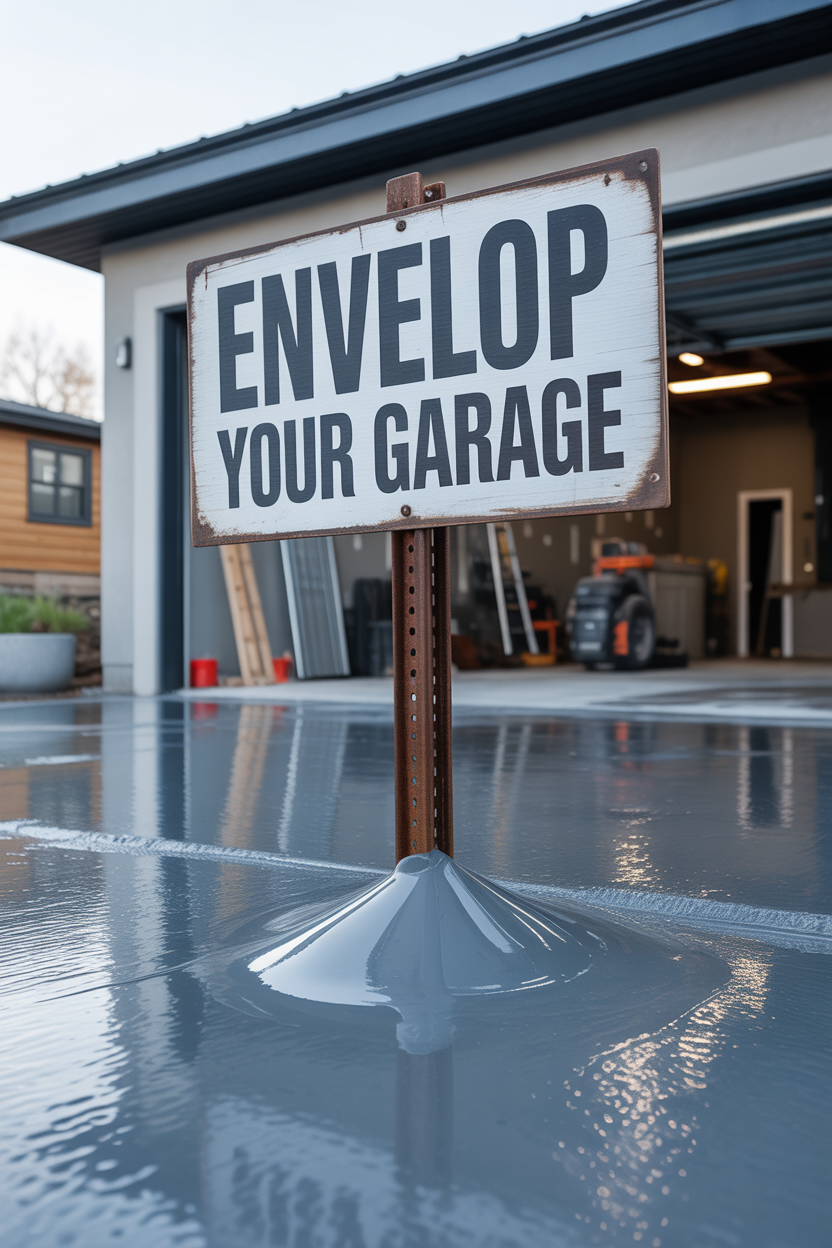
For everyone with an existing garage, this is our playground. We’re talking about liquids you apply directly to the top of the cured concrete.
These fall into two quirky categories: coatings and sealants.
Coatings are products like epoxy, polyurethane, and acrylics. They dry to form a durable, plastic-like film on the surface, creating a physical shield on top of the concrete.
Penetrating Sealants are different. These are chemicals, usually silica-based like silane or siloxane, that soak into the concrete.
They don’t form a film on top. Instead, they cause a chemical reaction inside the concrete’s pores that makes it harder for water to pass through. They’re more like microscopic traffic jams for water molecules.
Coatings vs. Sealants: The Goofy vs. Pluto Dilemma

I know, the names are confusing. If a coating actually seals the surface, why isn’t it called a sealant?
And if a “penetrating sealer” doesn’t seal anything but just gets in the way of water, why is it called a sealer? It can make your head spin.
It’s like trying to understand Disney dogs Goofy and Pluto.
A coating is Goofy. It talks, wears pants, and stands on its own, forming a distinct layer (the pants!) on top of the concrete. It truly seals the surface.
A penetrating sealant is Pluto. It becomes one with the concrete, diving into the pores and just being a dog. It doesn’t form a separate layer; it just makes the concrete itself better at resisting water from within.
So, just remember: Coatings are the pants-wearing Goofys on top of the floor. Sealants are the Plutos that soak into it. Now, wasn’t that helpful?
How Do DIY Floor Protection Options Stack Up?

Alright, let’s line up the options you can actually apply yourself, from the heavy-hitters to the lightweights. Remember, even the “least” protective option here is a huge improvement over bare concrete.
But first, a crucial piece of advice: If your garage looks like a river every time it rains, a floor coating is not your first step. A bad door seal or poor drainage is the real enemy. Fix that problem first! Slapping epoxy on the floor is like putting a fancy Band-Aid on a broken leg. Solve the root cause, then protect the floor.
Here’s a general ranking of how well these topical treatments block water, from best to not-as-best. For a detailed comparison, resources like Innovative Concrete Coatings offer great breakdowns.
| Moisture Block Rankings of Garage Floor Sealants and Coatings | |
|---|---|
| The Product | How Well It Works |
| Penetrating Sealant (Water- or Solvent-based) | Low |
| Water-based Acrylic Coating | Moderate |
| Water-based Polyurethane Coating | Moderate to High |
| Solvent-based Acrylic Coating | Moderate to High |
| Epoxy Coating | High |
| Solvent-based Polyurethane Coating | High |
| Polyurea & Polyaspartic Coatings | Very High |
What Is True “Batcave-Level” Waterproofing?
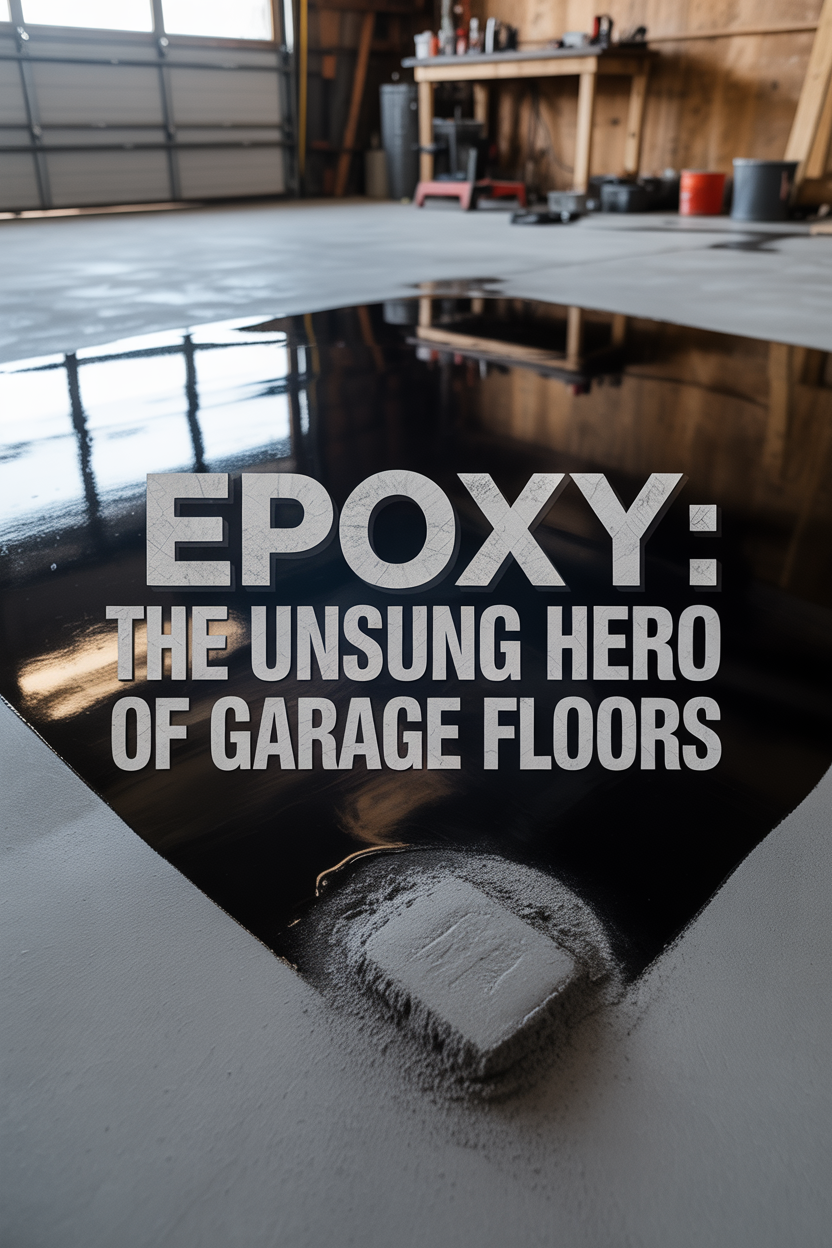
Okay, what if you really, truly need a 100% waterproof room under your house? What if you’ve won the lottery and are building a secret lair?
In that case, you’d be working with architects and engineers to build a system that goes far beyond a simple floor coating.
They would design a system that completely wraps the concrete structure in multiple layers of membranes and other materials.
This massive undertaking is called a comprehensive waterproofing system. It is not a DIY project.
For your garage, where you park your truck and store holiday decorations, you’re better off with the practical options we’ve already discussed: a membrane when it’s built or a coating/sealer after the fact.
Downsides of the Ultimate Membrane & Epoxy System
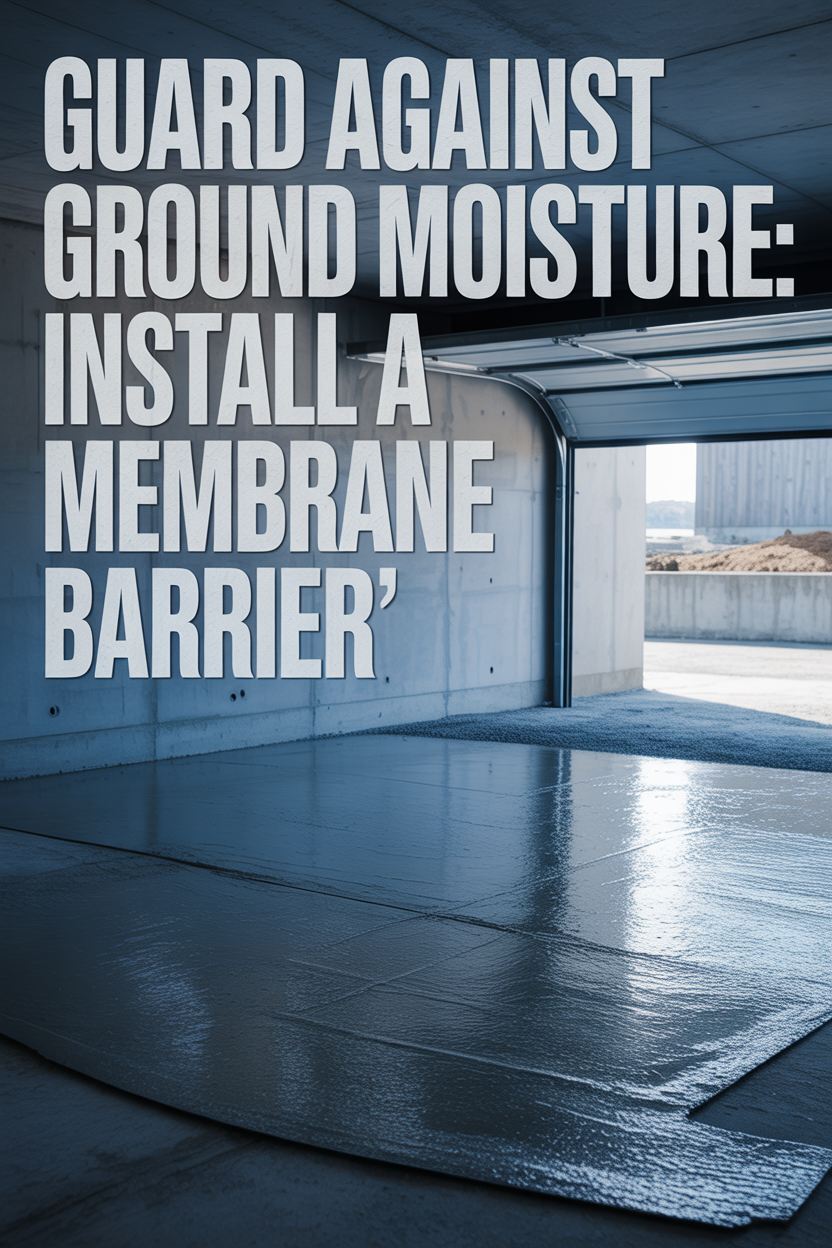
Going for that gold standard—the membrane-plus-coating combo—sounds great, but let’s be realistic. It’s not all sunshine and dry floors.
- Cost: This is a premium solution with a premium price tag for both materials and professional labor.
- Complexity: Applying a high-performance coating like epoxy is famously tricky. It’s a race against curing time, and if your prep work isn’t perfect, it will fail.
- Failure Risk: Here’s the scary part. If the coating on top is perfect but the membrane underneath gets a tear during construction, groundwater can seep into the concrete and get trapped. This creates a recipe for a moldy, crumbling concrete sandwich.
- Maintenance: Even tough floor coatings get tired. They can chip and wear down with heavy use, and eventually, you’ll have to re-coat them, which means more money and more work.
Building a New Garage? Why an Under-Slab Membrane is Essential
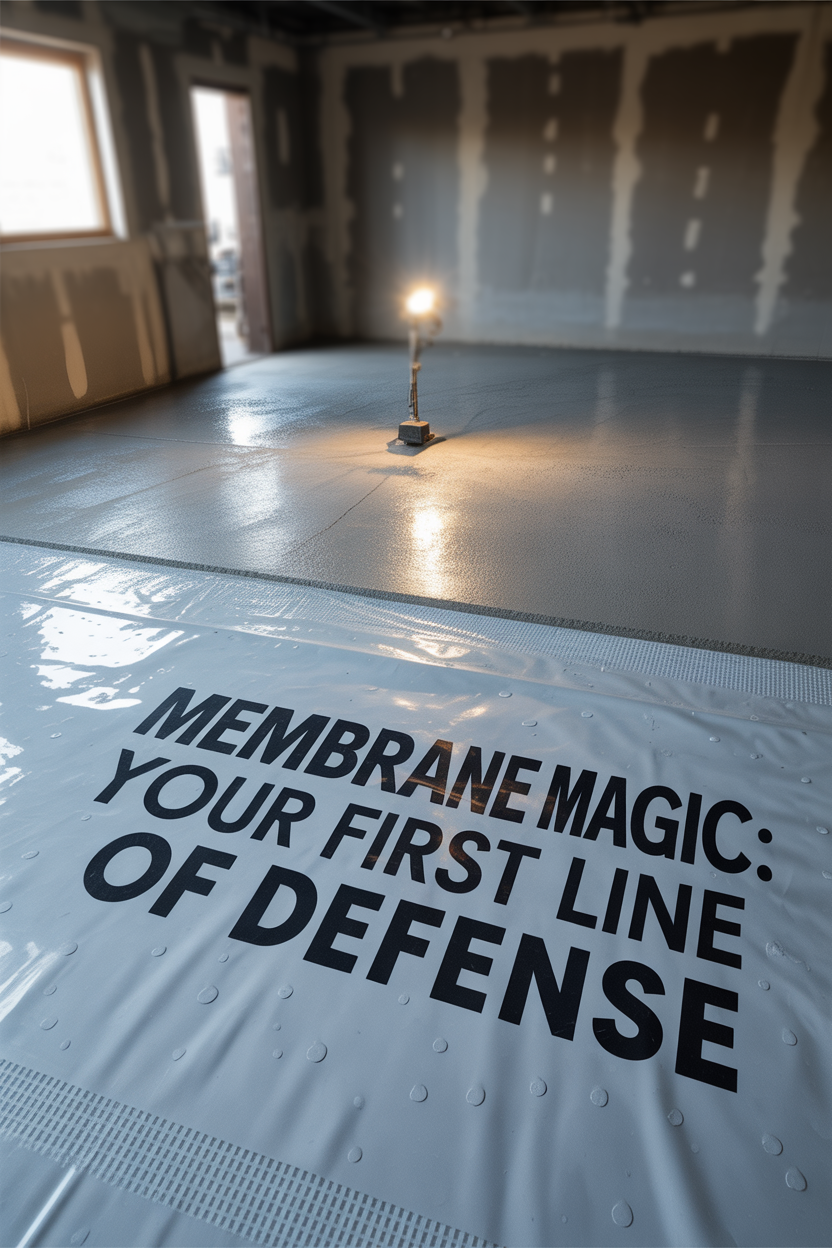
If you’re lucky enough to be building a new garage, seriously consider that under-slab moisture barrier. It’s a relatively small cost during construction that pays off for decades.
- Stops Mold and Crumbles: It’s your number one defense against ground moisture that causes mold, musty odors, and makes concrete flake apart (a process called efflorescence and spalling).
- Improves Air Quality: Less moisture coming through the floor means less damp, musty air in your garage and attached home.
- Makes Floor Coatings Better: Any sealer or coating you put on top will last longer and adhere better because it isn’t fighting a constant battle with moisture from below.
- Protects the Concrete Itself: As explained by experts at Polyguard, keeping the concrete drier from the start helps it last longer and resist cracking and other damage.
Why Is Surface Preparation So Important?
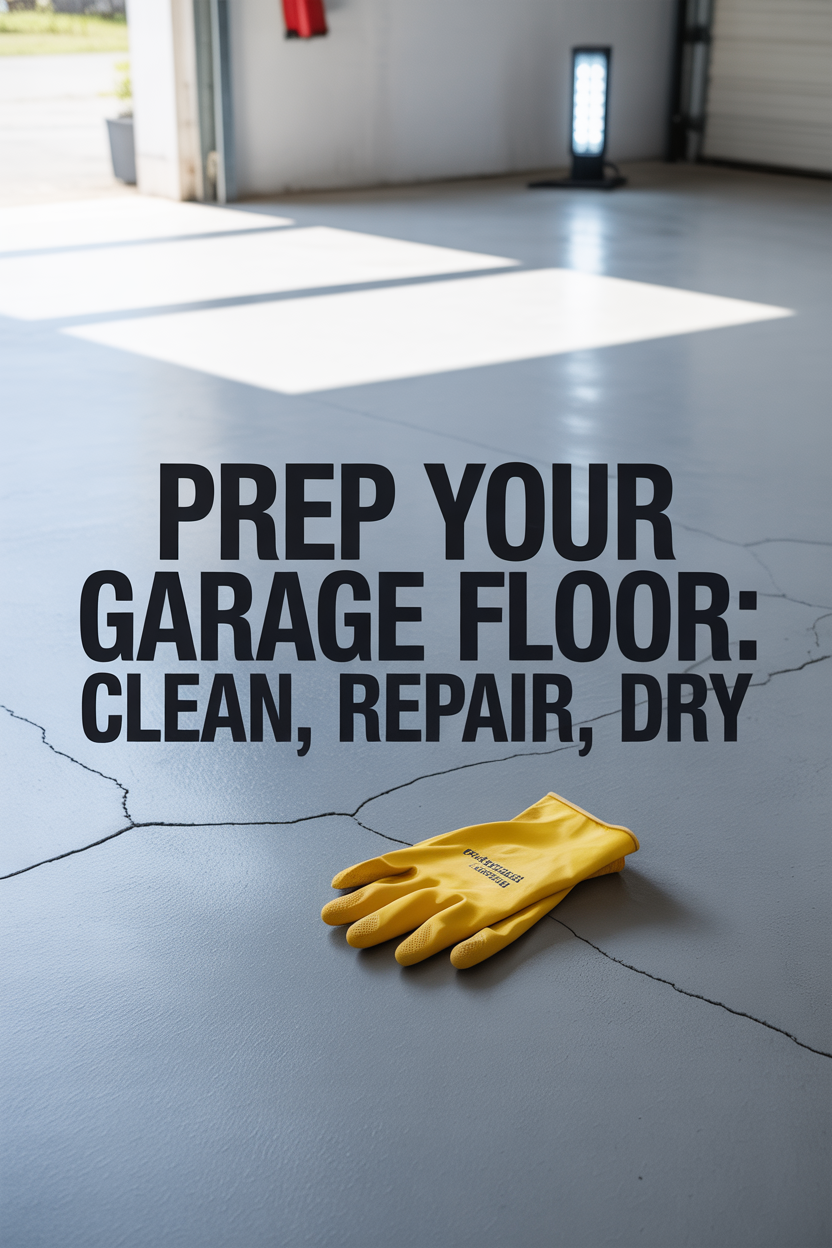
Applying a coating or sealer yourself? As any DIY guide will tell you, the single most important part of this job is preparation.
You can’t just mop the floor and start rolling. The more heavy-duty the product, the more prep you have to do.
Your goal is a clean, dry, and porous surface that the product can bond with. A general rule is that preparation is 90% of the job.
For an existing floor, the work is up to you. This table breaks down the typical prep work required for different product types.
| Prep Work Before Sealing Your Garage Floor | ||||||
|---|---|---|---|---|---|---|
| Product Type | Clean It | Fix Cracks | Let It Dry | Acid Etch | Grind It | Use a Primer |
| Penetrating Sealers | Yes | Yes | Yes | No | – | – |
| Acrylic Coatings | Yes | Yes | Yes | Maybe | – | – |
| Polyurethane Coatings | Yes | Yes | Yes | Maybe | – | – |
| Epoxy / Polyaspartic | Yes | Yes | Yes | Yes | Or Grind | Usually |
The “Fort Knox” Method: A Membrane Plus a High-Performance Coating
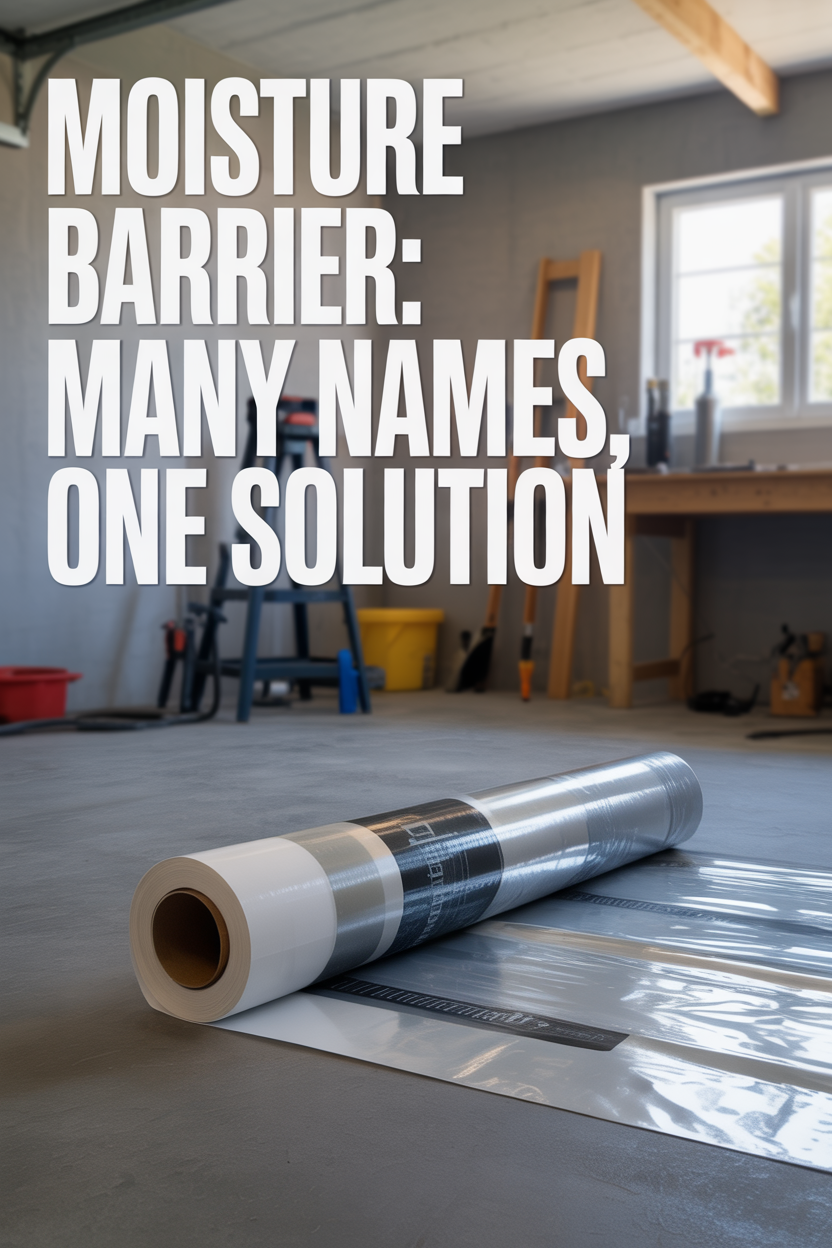
If you want the best protection money can buy for a home garage, it’s a two-pronged attack: something under your floor and something on top of it.
Before the concrete is even poured, a special plastic sheet, known as a moisture barrier membrane, is laid down. This is your first line of defense.
Then, after the concrete cures, you roll on a tough coating like epoxy or a newer polyaspartic finish. This creates a durable shield on the surface.
Does this mean your garage is now ready to be the deep end of a swimming pool? No. But it means that water from the ground below is stopped by the membrane, and spills from your car on top are stopped by the coating.
It’s an amazing system for managing moisture from both directions.
Even with this setup, extreme conditions or a failure in one of the layers could eventually let moisture in. But for 99.9% of garage situations, it’s a fantastic solution.
The real question is, do you need this level of protection? For a new build in a high-moisture area, absolutely. But for an existing garage, there are simpler—and still highly effective—options.
The Raincoat for Your Concrete: What Is a Moisture Barrier?
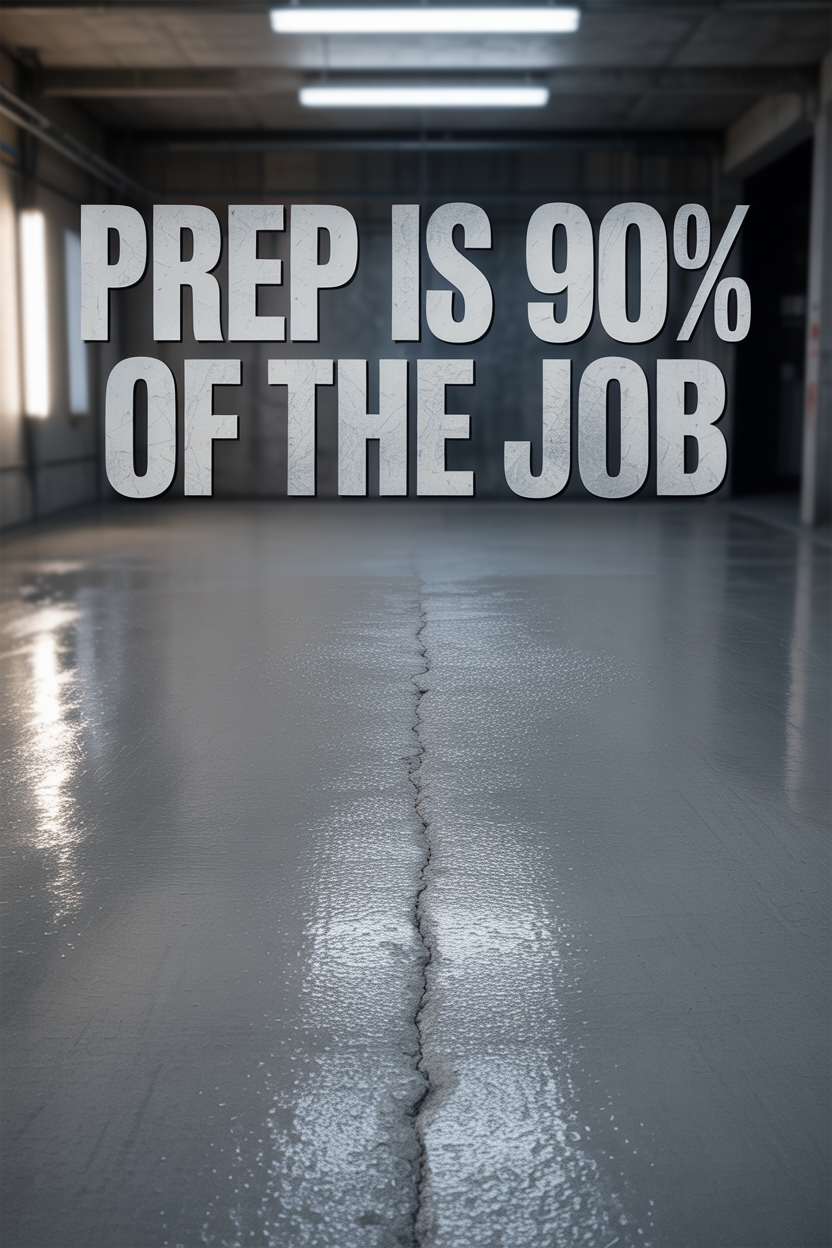
Think of a moisture barrier as the raincoat for your concrete. It’s any product you use to stop water from passing through it.
That word, “waterproof,” is a bit of a fib when it comes to concrete floors. It implies that zero water will ever get through, no matter what.
In reality, concrete is porous, like a very, very hard sponge. We’re not making it waterproof; we’re making it highly water-resistant.
The industry goal is to create a moisture-resistant barrier, not an absolute seal. There are two main types you’ll encounter for this purpose.
Decoding the Jargon: What Are Other Names for Moisture Barriers?
As you’re browsing online or walking the aisles of the hardware store, you’ll see this stuff called a million different things. Don’t let it fool you.
It’s all talking about the same goal: stopping water from getting through your concrete.
Keep an eye out for these common aliases:
- Vapor barrier
- Vapor retarder
- Moisture control system
- Moisture mitigation system
- Waterproofing layer
They all mean “the thing that keeps your concrete floor from acting like a sponge.” Now go forth and give your garage floor the dry life it deserves!


